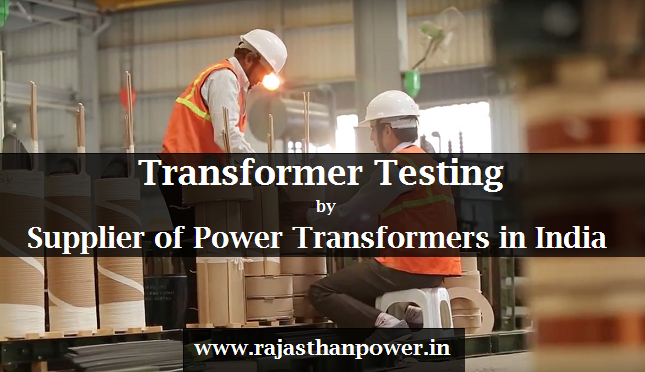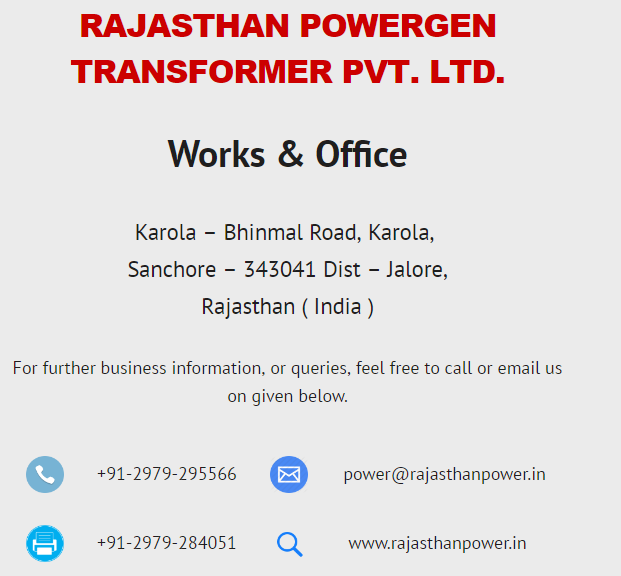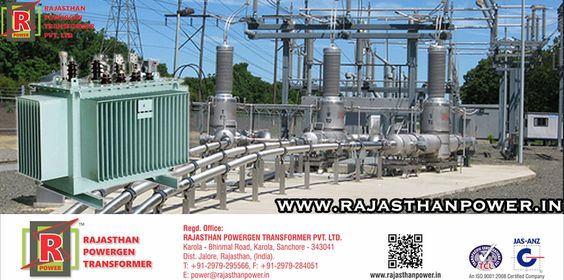Different types of transformer testing: Transformer testing can be divided into two parts on the basis of their location. Rajasthan Powergen, the leading transformer manufacturing company in India is providing details of transformer testing and its importance.
- Testing done at factory premises
- Type test
- Routine Test &
- Special testing
- Testing done at sites
- Emergency test
- Periodic/condition monitoring test
- Pre-commissioning test
- Types test of Transformer:
Testing has always been a part of manufacturing process. At each stage testing is done to check if all the parameters are correct and whether the transformer is meeting the customers’ expectations. Type test of a transformer is test which is done to confirm main as well as basic design criteria of a production lot. This test is carried on a prototype unit to confirm the basic design expectation of a transformer. This test includes:
- Measurement of transformer winding resistance
- Transformer Ratio Test
- Vector group Test of transformer
- Measurement of Load Loss and the voltage/short circuit impedance.
- Measurement of current and no load loss.
- Insulation Resistance Measurement.
- Transformer Dielectric Test.
- Temperature Rise Test.
- Tests on on-load tap-changer.
- Vacuum Test on Radiators and Tank.
- Routine Test:
To check individual unit operational performance, routine test is carried out in a lot. This test is done on every unit manufactured. This test includes:
- Transformer Ratio test
- Vector Group test of transformer
- Measurement of Transformer winding resistance.
- Measurement of load loss and voltage/ short circuit impedance.
- Measurement of current and no load loss (open circuit test).
- Insulation Resistance Measurement.
- Dielectric test of transformer.
- Test on on-load tap-changer.
- Oil Pressure test on transformer. This test is done to check any leakages gasket and past joints.
It is to be noted that Routine check includes all the type test of transformer except Temperature rise test and vacuum test.
- Special Test:
This test is done to ease the operation and maintenance of the transformer for the customer.
It is done to acquire all possible useful information while operating. This test includes:
- Measurement of zero sequence impedance of a 3 phase transformer.
- Dielectric Test.
- Short-Circuit Test.
- Acoustic Noise Level Measurement.
- No-load current harmonic Measurement.
- Measurement of power used in operating oil pumps and fans.
- Test of accessories/ components such as temperature indicators, buchhloz relay, oil preservation system, pressure relied devices etc.
Pre-commissioning tests: The tests which are done at the site before the commissioning of the transformer is known as pre-commissioning test. At site, after the installation these tests are carried out to assess the condition of the transformer. The low voltage test results are then compared with the factory test reports.
Measurement of Transformer winding resistance
Through this test, I2 R loss is calculated. It is also used to calculate temperature of the windings when the temperature rise test ends. This test is included in both, the type test and the routine test. To check any loose connections, high contact resistance in tap changers, broken strands of conductors and high voltage leads and bushing etc. in transformer, this test is perform at the site to ensure healthiness.
Methods to measure transformer winding resistance:
- Current Voltage Method for measuring winding resistance.
- Bridge method
- Kelvin Bridge method
- Automatic winding resistance measurement kit.
Note: At each tap, transformer winding resistance should be carried out.
Transformer Ratio Test:
This test is essential type test of transformer, as transformer performance mostly depends on the voltage ratio and specific number of turns. To test transformer ratio follow the given steps:
- To High Voltage winding apply three phase 415 V supply. Keep Low Voltage winding open.
- Measure the voltage induced at High Voltage terminal and Low Voltage terminal respectively. This will give us the exact voltage ratio.
- Above steps should be repeated at each tap position.
Buy premium quality energy efficient transformers in India form the leading supplier of transformers, Rajasthan Powergen for power and energy demand.








